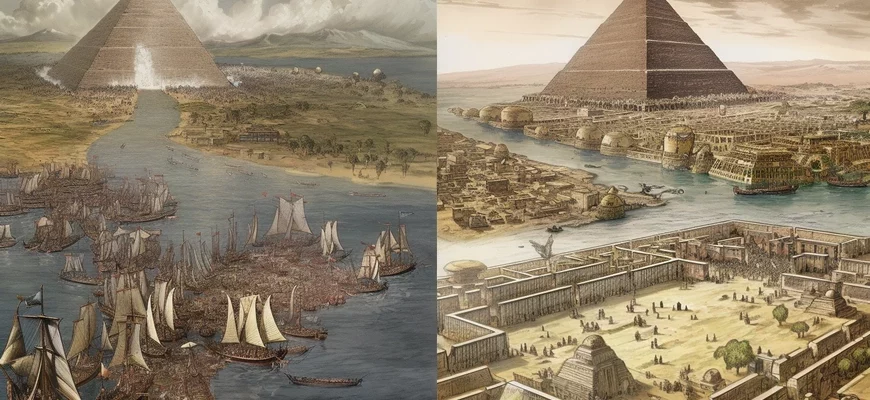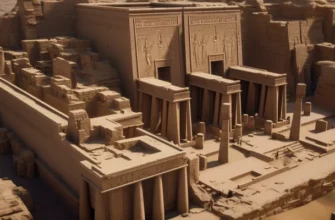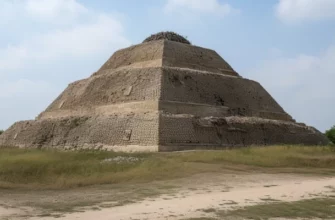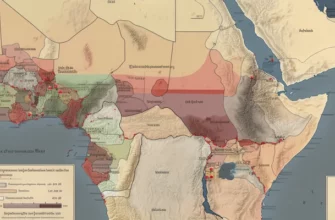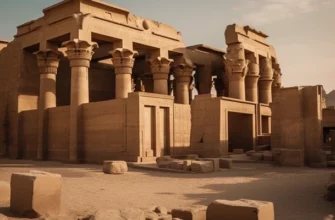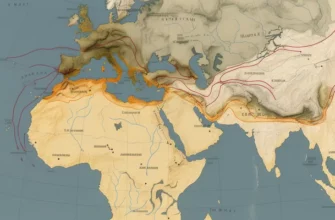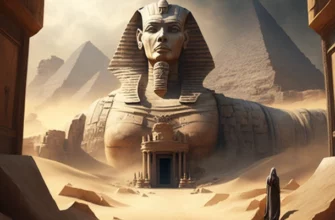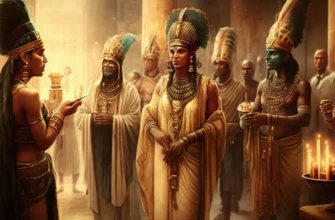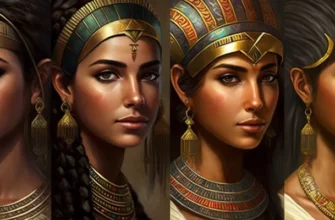The New Kingdom in the history of Ancient Egypt (c. 1554 – c. 1075 BC) was a period when the state was reunited and prospered. The country was ruled by powerful pharaohs from the 18th to 20th dynasties, who strengthened their power and developed culture. During this period, significant construction projects were launched, new artistic trends emerged, and religion took an important place in the life of the people. However, at the end of the 20th dynasty, the state faced a crisis and lost its influential position.
Political life of the New Kingdom: 18th-20th dynasties
Political life in the New Kingdom (c. 1554 – c. 1075 BC) was quite stable thanks to the strong pharaohs of the 18th-20th dynasties. The 18th dynasty, led by Amenhotep III and his successor Tutankhamun, closed the era of the New Kingdom. During the reign of the 19th and 20th dynasties, the country flourished, and Pharaoh Ramses II became one of the most famous rulers of Ancient Egypt. However, at the end of the 20th dynasty, the state faced a crisis and was conquered by external enemies, leading to the decline and end of the New Kingdom.
Social life in the New Kingdom
Social life in the New Kingdom (c. 1554 – c. 1075 BC) was dependent on a social structure that included the pharaoh, officials, priests, craftsmen, and peasants. Religion, based on the cult of worship of the pharaoh and the gods, played an important role in people’s lives. Social status depended on profession and wealth, but education and knowledge also played an important role. Culture and art flourished during the New Kingdom, as evidenced by the creation of monumental structures, works of art, and religious works.
Religion and Science in the New Kingdom
Religion and science in the New Kingdom (c. 1554 – c. 1075 BC) were two of the most important areas of life. The religious system included a multitude of gods who influenced various aspects of people’s lives. Religious practice included rituals, prayers, and sacrifices. The New Kingdom also saw significant developments in science, particularly astronomy, mathematics, and medicine. Although science was sometimes used for religious purposes, the overall relationship between religion and science during this period remains a subject of research and debate among scholars.
Art of the New Kingdom
The art of Egypt’s New Kingdom (c. 1550-1070 BC) is known for its majestic and realistic depictions of pharaohs and gods, as well as mythological scenes and everyday life. The main characteristics of this art style include the depiction of people and animals on a large scale, the use of different colors and painting techniques, and the detailed reproduction of images and details.
One of the most famous types of art from the New Kingdom of Egypt is the frescoes that adorned the walls of palaces, temples, and tombs. These frescoes were executed with a high level of skill and featured images of pharaohs, gods, animals, and natural landscapes.
Another art form that developed in the New Kingdom of Egypt was sculpture. Sculptors used a variety of materials, including granite, bronze, and limestone, to create large and detailed sculptures of pharaohs and gods.
Also important in New Kingdom Egyptian art were religious objects such as statues of gods and pharaohs, amulets, seals, and other religious items. These objects contained symbolism and were used for cult purposes.
Overall, the art of the New Kingdom of Egypt was grand, detailed, and highly skilled. It reflected important aspects of Egyptian life and culture and remains a great source of information about this period of history.
Conclusion
New kingdom. Egypt’s transformation into a world power was a very important period in the country’s history, as it brought significant economic, cultural, and political development. During this period, many large buildings were constructed, such as pyramids, temples, and palaces, and science, literature, and art flourished.
The New Kingdom of Egypt also became a world power that had a significant influence on the politics, culture, and economy of its neighboring countries. Egypt became an important trading partner for many other countries, as well as a military power that defended its interests and gained new territories.
However, it should be noted that the end of the New Kingdom had an impact on the further history of Egypt. After a period of stability and prosperity, difficult times ensued, and the country fell under the influence of other peoples and empires. Nevertheless, the influence of the New Kingdom of Egypt on world history was significant, and Egypt has remained an important cultural and historical center of the world to this day.
